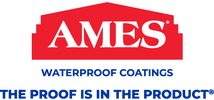Ames Case Study
Case Study – Salem Oregon 2020/2021
The Ames Research Laboratories facility built in 1946 has a combination of sloping and flat roofs with over 43,500 sq. ft. in surface area. The facility was typical of many that were built in that era which continue to be in service.
The roof type consisted of built-up asphalt rolled roofing over a 1” layer of insulation board and slip sheet, all of which were mechanically fastened down to the wood substrate.
The existing roof had issues with inadequate drainage to roof drains and scuppers, so standing water had created the need for repairs. Repairs were done for years on a spot basis in those areas.
The owner of the building had contacted a reputable local roofing Contractor who had inspected the building and proposed complete replacement of the roof.
Proposal included removal of existing roof down to wood roof deck, re-installation of new TPO roofing over insulation, and sheathing to meet current building codes. The cost of repairs, abatement of any asbestos, or installation of new drains was not included in the original bid. The proposal was in the amount of $ 496,960.00
The owner was preparing to proceed as the roofing contractor had completed several previous projects on other buildings in a satisfactory manner. However, in completing due diligence, the owner contacted a consultant to review the quotation, inspect the roof, and identify all potential value engineered recommendations from all the involved parties.
The consultant arranged a physical roof survey with the building owner, partnering roofing contractor, and facilities maintenance manager.
During the survey, the facilities maintenance manager was instrumental in identifying the variety of problems and fixes that had occurred. The facilities manager had spot repaired these areas over several decades using his own forces when the situation warranted.
Although no repairs had been specifically identified in the roofing contractor’s proposal, numerous potential repairs were identified during the roof survey with all parties involved. This was important as the base price to remove and replace the roof was just a portion of what would eventually become the combined costs. The total expense would ultimately include repair framing, drains, abating possible asbestos, and curing other yet unexposed conditions.
It was further determined that much of the roof as existing was in sound condition and other options in lieu of replacement could be considered.
After review of initial options presented by the roofing contractor & facilities manager, the third-party consultant recommended the following:
- Obtain a quote for the repairs identified during the roof survey.
- Obtain a quote for installing an EPDM roof system on the flat portion of the roof susceptible to structural movement.
- Obtain a quote for framing crickets in the roof to re-route drainage, replacement of all roof drains and scuppers with stainless steel scuppers, and a TPO membrane roof at all the affected valleys.
- Obtain a quote for time & material rates for completing any additional repairs uncovered during work performance.
- Have the roofing contractor consider applying an Ames Roof Coating Membrane System over the balance of the roof areas.
The roofing contractor agreed to approach the project with the recommendations made and was consequently assisted by the Ames Research Laboratories team for proper application guidelines. The facilities maintenance staff also reviewed application guidelines and proper future maintenance of the Ames Roof Coatings System. The entire project was completed over the course of two summers in 2020 and 2021.
To establish the comparative costs between a full replacement of the roof and a partial repair with coatings on the balance of the roof, we combined the initial estimate along with the added repairs to come up with what the costs would have been to do a full tear-off.
The initial roof maintenance plan before consulting:
It is important to note the actual added cost to complete needed repairs to the roof areas would have been incurred as soon as the Roofing Contractor removed the existing roof and determined the extent of the roof substrate and drain damage. Consequently, the final cost for a tear off, repair and replacement is as shown.
Let’s do the math and see how the two possible outcomes compare on a cost basis:
The methods utilized in problem solving allowed the trouble areas of the roof to be approached with long term solutions. The savings were substantial! – Just over 50% Savings!!
Accomplished Benefits:
- Changed drainage patterns to avoid future extensive structural damage.
- Installed new drains when needed to eliminate water ponding issues and enhanced drainage.
- Installed flat roof EPDM solution to structural movement issues at Penthouse.
- Installed an Ames roof coating system that can be easily maintained by facility maintenance.
- Will save money on cooling costs with white reflective roof.
- Saved money on roof budget through a well-conceived project approach.
- Extended the life of this roof for decades.
- Avoided expensive tear-off and landfill costs.
- Additional environmental benefits – less material sent to landfill, energy efficient, long-lasting, less mold risk at facility interior, reduced VOC, and sustainable roofing materials
The Ames Roofing System has created a watertight and reflective surface to extend the life of the existing roof. Ease of application of an Ames Roof System allowed the building owner to use their own maintenance personnel working in tandem with a qualified independent applicator do the job.
A Winning Strategy
Bringing all parties together to consult on making cost-effective choices is part of the roof asset management process.
Ames Research Laboratories – STRAIGHT ANSWERS TO TOUGH QUESTIONS

